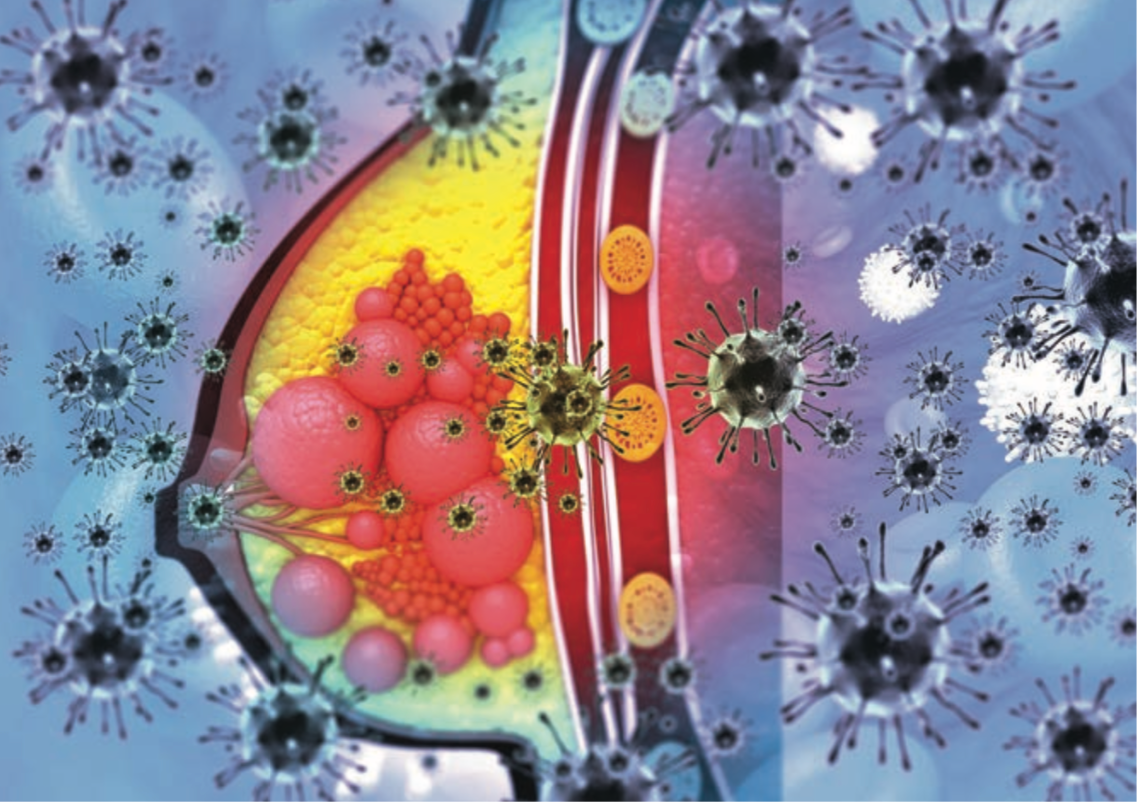Ribociclib Combo Yields Extended iDFS Benefit in HR+/HER2– Breast Cancer
Data from NATALEE continue to support the addition of ribociclib to adjuvant nonsteroidal aromatase inhibitors in HR-positive, HER2-negative breast cancer.
“The results continue to support the benefit of adding 3 years of ribociclib to adjuvant [NSAI] in this broad population of HR-positive, HER2-negative early breast cancer at risk of recurrence,” according to study author Peter A. Fasching, MD.

Combining ribociclib (Kisqali) with nonsteroidal aromatase inhibitor (NSAI) therapy demonstrated sustained improvements in invasive disease-free survival (iDFS) and distant disease-free survival (DDFS) vs NSAI alone among patients with hormone receptor (HR)–positive, HER2-negative early breast cancer, according to 4-year landmark analysis data from the phase 3 NATALEE trial (NCT03701334) presented at the 2024 European Society for Medical Oncology (ESMO) Congress.
With a median follow-up of 44.2 months across the intent-to-treat (ITT) population, the 3-year iDFS rates were 90.8% with ribociclib plus NSAI vs 88.1% with NSAI alone, representing a difference of 2.7%. At 4 years, the respective iDFS rates were 88.5% vs 83.6%; a difference of 4.9% (HR, 0.715; 95% CI, 0.609-0.840; P <.0001).
Of note, most iDFS events in each arm were associated with distant recurrence (6.9% vs 9.6%). The iDFS benefit with the ribociclib-based combination also extended across all key prespecified subgroups based on characteristics such as menopausal status, prior chemotherapy, region, and prior endocrine therapy.
In terms of specific subgroup data, the iDFS rates among patients with stage II disease were 94.4% vs 92.7% at 3 years with a change of 1.7% and 93.9% vs 89.6% at 4 years with ribociclib/NSAI vs NSAI alone with a change of 4.3%, respectively (HR, 0.644; 95% CI, 0.468-0.887). Among those with stage III disease, the respective 3-year iDFS rates were 88.3% vs 84.8% with a change of 3.5%, and the 4-year rates were 84.3% vs 78.4% with a change of 5.9% (HR, 0.737; 95% CI, 0.611-0.888).
Regarding nodal status, the 3-year iDFS rates among patients with N0 disease were 93.4% vs 90.8% with a change of 2.6% with ribociclib/NSAI vs NSAI alone, respectively; the 4-year rates were 92.1% vs 87.0% with a change of 5.1% (HR, 0.666; 95% CI, 0.397-1.118). For those with N1 to N3 disease, the 3-year iDFS rates were 90.4% vs 87.7% with a change of 2.7%, and the 4-year rates were 88.0% vs 83.0% with a change of 5.0% (HR, 0.731; 95% CI, 0.617-0.866).
“The results continue to support the benefit of adding 3 years of ribociclib to adjuvant [NSAI] in this broad population of HR-positive, HER2-negative early breast cancer at risk of recurrence,” study author Peter A. Fasching, MD, an associate professor of Gynecology and Obstetrics Translational Medicine at the University Hospital Erlangen and Comprehensive Cancer Center Erlangen-EMN in Germany, said in a presentation on these data.
In the NATALEE trial, 5101 patients were randomly assigned to receive ribociclib at 400 mg daily as part of a 3-weeks-on, 1-week-off schedule for 3 years plus NSAI (n = 2549) or NSAI alone (n = 2552). Treatment with NSAI consisted of letrozole (Femara) or anastrozole (Arimidex) for at least 5 years plus goserelin (Zoladex) for male patients and female patients who are premenopausal.
The trial’s primary end point was iDFS based on Standardized Definitions for Efficacy End Points in Adjuvant Breast Cancer Trials criteria. Secondary end points included DDFS, recurrence-free survival, overall survival (OS), and safety and tolerability.
Adult patients with HR-positive, HER2-negative early breast cancer were eligible for enrollment on the trial. Those with prior endocrine therapy at 12 months or earlier prior to randomization were able to enroll. Investigators stratified patients based on anatomical stage, menopausal status, receipt of previous chemotherapy, and geographic location.
As of the data cutoff, 62.8% of patients in the experimental arm completed 3 years of treatment with ribociclib. Of note, 36.2% of patients discontinued treatment with ribociclib early, with 20.0% discontinuing due to adverse effects (AEs). The median duration of exposure to study therapy was 45.1 months in the ribociclib/NSAI arm compared with 45.0 months in the NSAI alone arm.
Data showed that treatment with ribociclib/NSAI produced enduring DDFS improvements compared with NSAI alone (HR, 0.715; 95% CI, 0.604-0.847; P <.0001) as well as a positive trend associated with OS (HR, 0.827; 95% CI, 0.636-1.074; P = .0766). Fasching noted that follow-up for OS is still ongoing.
Any-grade AEs of special interest (AESIs) in the ribociclib/NSAI arm and NSAI alone arm included neutropenia (62.8% vs 4.5%), arthralgia (38.8% vs 44.4%), liver-related toxicity (26.7% vs 11.4%), and nausea (23.5% vs 7.9%). The most common grade 3 or higher AESI in the ribociclib arm was neutropenia (44.4%). AEs associated with the liver generally consisted elevated alanine aminotransferase or aspartate aminotransferase without accompanying increases in bilirubin.
Reference
Fasching PA, Stroyakovskiy D, Yardley DA, et al. Adjuvant ribociclib plus nonsteroidal aromatase inhibitor in patients with HR+/HER2– early breast cancer: 4-year outcomes from the NATALEE trial. Presented at the 2024 European Society for Medical Oncology Congress (ESMO); September 13-17, 2024; Barcelona, Spain. LBA13.